
Precision in whimsy
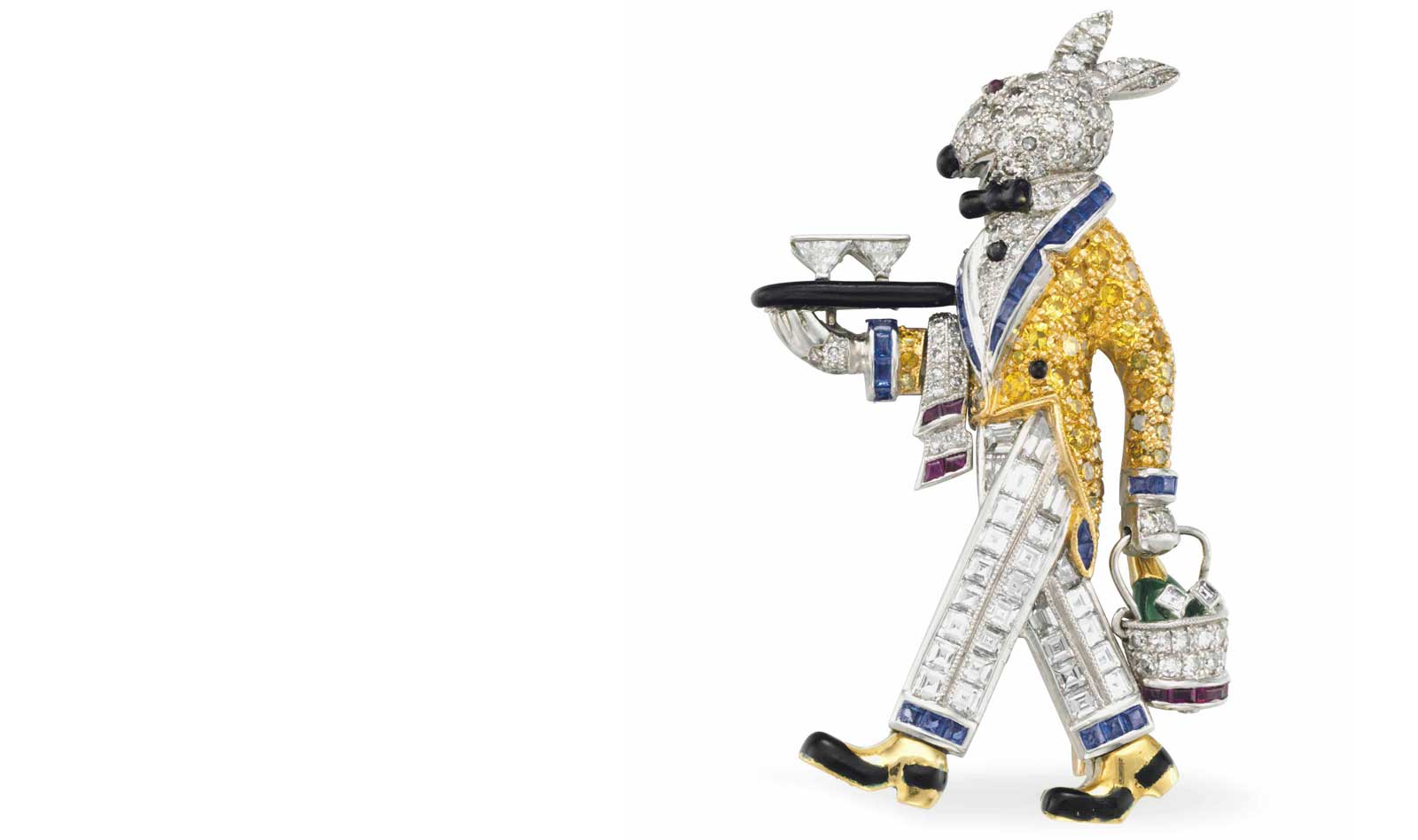
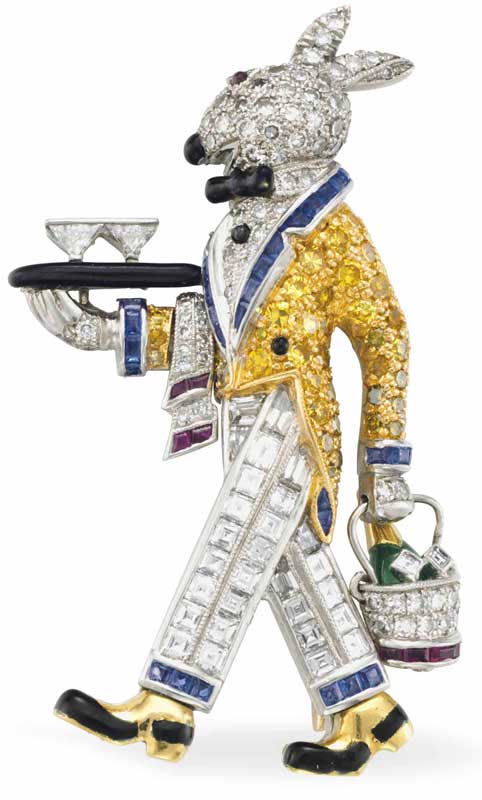
Precision in whimsy
Jewelry doesn’t have to be serious to be well-designed, well-crafted and made of precious materials. Raymond Yard’s rabbit brooches certainly fit those categories. This exquisite and elegant bunny is one of a series of brooches depicting the furry-eared animal serving various types of alcoholic drinks, often carrying an ice bucket, serving towel over his arm, and impeccably dressed in a tuxedo. The head, right up to the pointy ears, features pavé-set diamonds. The lapels and cuffs are framed in calibré-cut sapphires while the jacket is made of yellow diamonds. His trousers are set with crisp rows of square cut diamonds. A green enamel champagne bottle nestles in the diamond and ruby-set bucket, articulated to allow the bucket to swing from its handle. Mounted in platinum and gold, the brooch stands just 1-7/8" high, making the detail all the more remarkable. This piece doubled its pre-sale estimate, an indication of how much Raymond Yard’s unique style and fine make are still appreciated nearly a century after his work first appeared in the marketplace.
Other brooches in the rabbit-waiter series feature pants set with emeralds and all-white diamond jackets, all of them wearing proper shoes. Yard began the rabbit waiter series in 1928 and continued through the early 1930s, during the prohibition of serving any kind of alcoholic drinks. Perhaps it offered a wink to the prodigious amount of alcohol that was actually served during the era since the law simply pushed drinkers underground, into speakeasies and often into the arms of the criminal underworld.
Raymond Yard began his jewelry career at Marcus & Co., working his way up and learning the trade from some of the finest craftsmen of the era. Yard opened his own business in New York in 1922, enjoying the patronage of some of the wealthiest people of the day, including John D. Rockefeller, Jr.
While Yard is known for classic brooches that echoed the themes of his era, particularly the Art Deco style, his whimsical brooches are among his most recognizable designs. Another iconic series are his “house” brooches, jeweled replicas of his clients’ actual homes. Working from photographs, he depicted the homes of some of high society’s most prominent figures, including that of fashion icon C.Z. Guest.
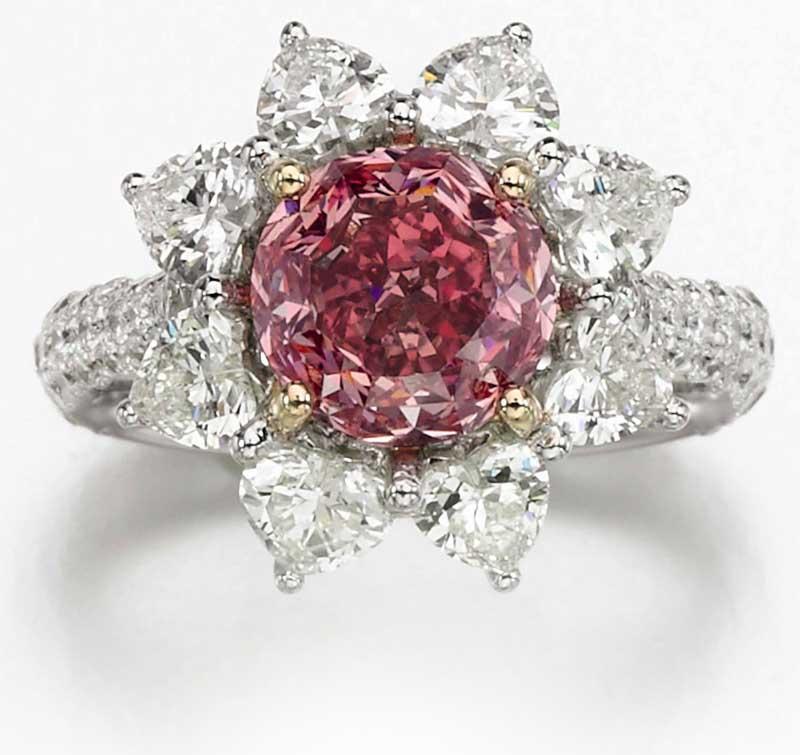
In the pink—and purple
Purplish pink diamond ring, $2,434,794
Sotheby’s Geneva
May 15, 2018
In the rarefied world of fancy colored diamonds, degree of saturation is one of the most highly valued qualities. Fancy colored diamonds vary in intensity from faint to vivid or deep. The ring shown features a round modified brilliant-cut fancy vivid purplish pink stone weighing 2.63 carats. It is set in a frame of heart-shaped diamonds, with brilliant cut diamonds pavé-set along the ‘shoulders’ of the ring shank.
The description, ‘fancy vivid purplish pink,’ indicates that the main color of the diamond is pink, modified by purple. There are nine levels of saturation used to grade certain diamond colors, including this one. ‘Vivid’ indicates that the diamond is intensely saturated, giving it the rich color seen. In addition, the color is well dispersed through the stone. Although fancy color diamonds emerge from the earth with body color, the final color is determined by the diamond polisher’s ability to take advantage of the optics inherent in the stone. Each facet placed on a diamond affects the overall appearance. It is possible for this color to diminish or intensify according to the way those facets are placed by the polisher. Although diamond polishers aim to maintain as much weight as possible, they often sacrifice diamond weight for a better, more intensely-hued stone. As the polisher works, he keeps the optimal color in mind. When a diamond is graded by a reputable laboratory such as the Gemological Institute of America, which graded this stone, the designation of one grade higher or lower in intensity dramatically affects the value of the diamond.
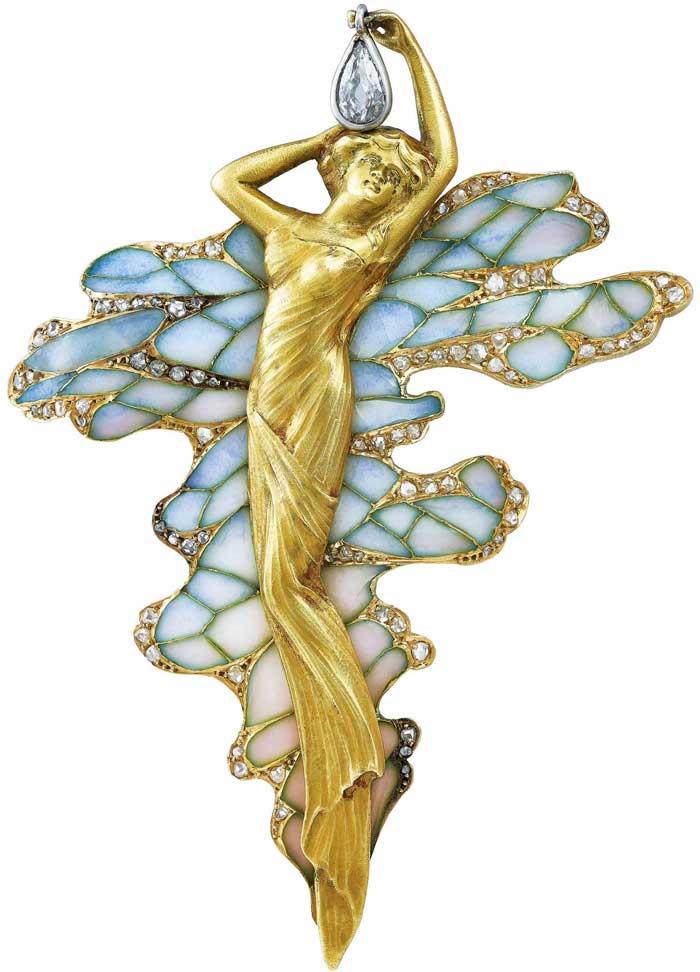
Pursuing the ideal
Art Nouveau pendant, $12,602
Christie’s Geneva
May 16, 2018
The absolute essence of an Art Nouveau jewel, this exquisite pendant features an artfully draped female form modeled in gold, against a freeform background of opalescent enamel, edged with rose-cut diamonds. A pear-shaped diamond is suspended from the figure’s gracefully arched arm. Cloisonné enamel forms a delicate framework of abstract shapes, all of it outlined in gold. Enamel is a fragile material and it is a testament to the make as well as to the previous owners that this piece has survived in good condition for more than a century.
Like many such works of bejeweled art made at the turn of the last century, this piece has no specific maker’s mark, though it does carry French marks. Although unsigned, it is nearly a copy of another pendant, with a similarly modeled and dressed woman, against a similar opalescent and diamond abstract background. That figure holds a multi-stone diamond star in one outstretched hand and is signed GL for the maker, Gaston Lafitte. It is plausible that the piece sold in May at Christie’s Geneva was by the same maker, the initials having been lost through polishing or wear over the past 100 years.
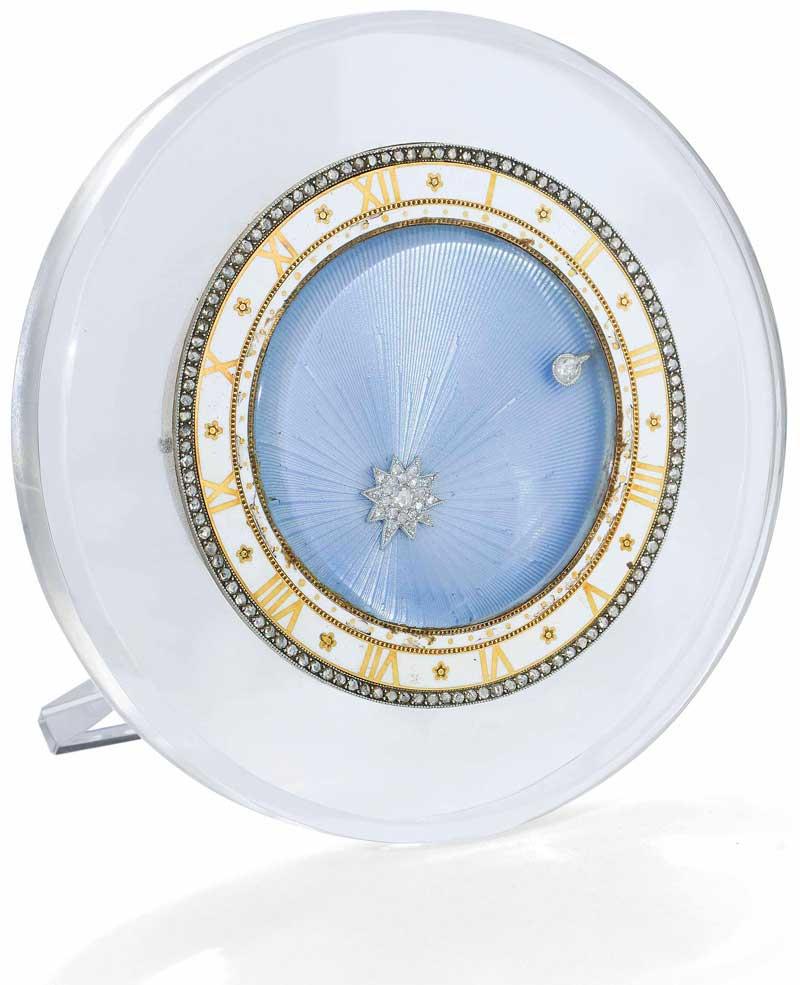
The Mystery of Time
Cartier desk clock, $107,120
Christie’s Geneva
May 16, 2018
Whether time passes slowly or goes by in a flash, there are few more beautiful ways to measure it than with an Art Deco clock by Cartier. This miniature marvel, made of rock crystal, guilloché enamel, diamonds and gold, measures just 3-¼" in diameter and was housed in a red fitted Cartier box. It is a fine example of the jeweler’s art, starting with the use of guilloché enamel in the central clock face. Guilloché enamel is created with an enamel base applied to a metal ground, usually gold. The entire surface of the enamel is striated through engine turning, forming the precise lines seen here. Gold Roman numerals mark the twelve hour positions, which is then encircled by a frame of rose cut diamonds. In place of hands, the minutes and hours are marked by “floating” diamond-set elements that are attached to the mechanical movement in the rear. This clock is a cousin to Cartier’s mystery clocks, in which the two markers appear to move without any means of propulsion at all. The clock is a true treasure, as proven by the selling price, more than double the high estimate.




























